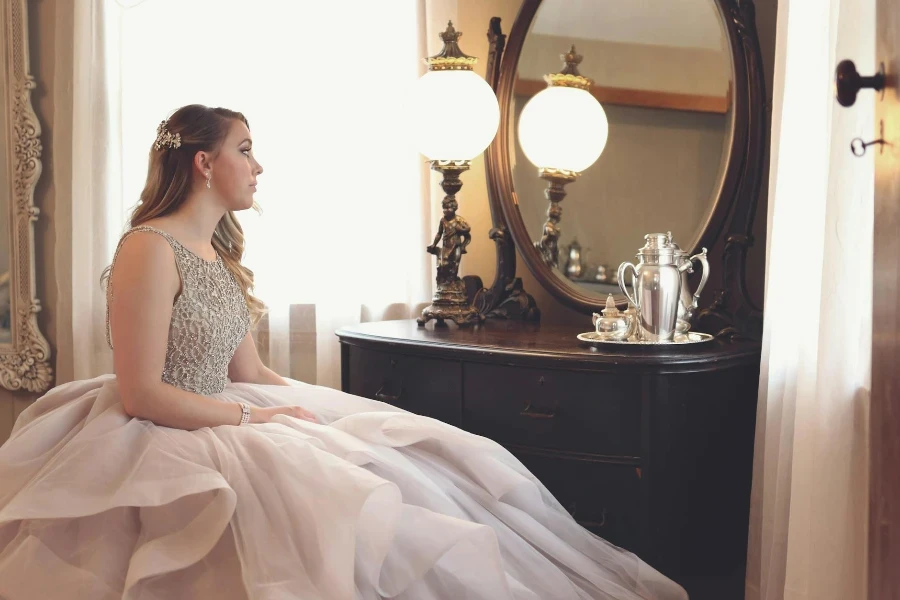Gowns have long been a symbol of elegance and sophistication in the world of fashion. From formal events to casual gatherings, the right gown can elevate any occasion. This article delves into the intricacies of gowns, covering everything from the latest trends in design to the most suitable materials for every type of event. Whether you’re preparing for a gala or selecting a casual dress, understanding the nuances of gowns will enhance your decision-making process.
Table of Contents:
– The evolution of gown designs
– Selecting the perfect material for your gown
– The significance of color and pattern in gowns
– Gowns for every occasion
– Caring for your gowns: Tips and tricks
The evolution of gown designs

Gown designs have undergone significant transformations over the years, reflecting changes in fashion trends, cultural influences, and advancements in textile technology. Initially, gowns served as a status symbol, with elaborate designs and luxurious fabrics indicating wealth and social standing. However, as fashion became more democratized, gowns evolved to cater to a broader audience, incorporating more practical and versatile elements.
Today, designers blend traditional elements with modern aesthetics, creating gowns that respect historical silhouettes while embracing contemporary trends. This fusion has led to a variety of gown styles, from sleek, minimalist designs to intricate, embellished creations. Understanding the evolution of gown designs can provide valuable insights into the current trends and help individuals select a gown that resonates with their personal style and the occasion.
Selecting the perfect material for your gown

The material of a gown plays a crucial role in its overall appearance and comfort. From luxurious silk to breathable cotton, the choice of fabric can significantly impact the gown’s functionality and suitability for different settings. For formal events, silk, satin, and velvet are popular choices, offering a sophisticated sheen and elegant drape. These materials, however, require careful maintenance to preserve their quality.
For more casual or outdoor events, lighter materials such as cotton, linen, and chiffon are preferable due to their comfort and ease of care. These fabrics offer a blend of durability and breathability, making them ideal for warmer climates or day-long events. When selecting a gown, considering the event’s nature and your personal comfort can guide you toward the most appropriate material.
The significance of color and pattern in gowns

Color and pattern play pivotal roles in the impact of a gown. They can convey mood, complement skin tones, and express personal style. Classic colors like black, white, and navy offer versatility and timeless elegance, making them suitable for a wide range of occasions. In contrast, vibrant colors and bold patterns can make a statement, reflecting the wearer’s personality and setting the tone for the event.
When choosing a gown, it’s important to consider the event’s context and the message you wish to convey. For formal events, solid colors and subtle patterns are generally preferred, while casual gatherings allow for more experimentation with colors and prints. Additionally, understanding color theory and how different hues interact can enhance the gown’s visual appeal and ensure it complements your overall look.
Gowns for every occasion

Gowns are not one-size-fits-all; different events call for different styles. Understanding the nature of the occasion is key to selecting the appropriate gown. For formal events such as weddings and galas, floor-length gowns with refined detailing are the norm. These events often have a dress code, requiring attendees to adhere to specific guidelines regarding gown length, style, and color.
Conversely, semi-formal and casual events offer more flexibility in gown choice. Cocktail dresses, midi gowns, and even sophisticated jumpsuit gowns are suitable options that balance elegance with comfort. When choosing a gown for any occasion, considering the event’s formality, venue, and your role (e.g., guest, host, honoree) can help narrow down the options and ensure you make an appropriate and impactful choice.
Caring for your gowns: Tips and tricks

Maintaining the beauty and longevity of gowns requires proper care and attention. Different materials necessitate different care methods; for instance, silk and satin gowns should be dry cleaned to preserve their texture and color, while cotton and linen gowns can often be machine washed on a gentle cycle. Reading and following the care label instructions is crucial to avoiding damage.
Storing gowns correctly is also essential. Use padded hangers to maintain the shape of the shoulders and avoid stretching. For long-term storage, consider breathable garment bags to protect against dust and moisture. Regular maintenance, such as spot cleaning and airing out gowns, can prevent minor wear and tear from becoming permanent damage.
Conclusion:
Gowns are a versatile and significant element of fashion, suitable for a wide range of occasions. Understanding the evolution of designs, selecting the right material, and considering the significance of color and pattern are crucial steps in choosing the perfect gown. By considering the nature of the event and adhering to care instructions, you can ensure your gown remains a cherished part of your wardrobe for years to come.




